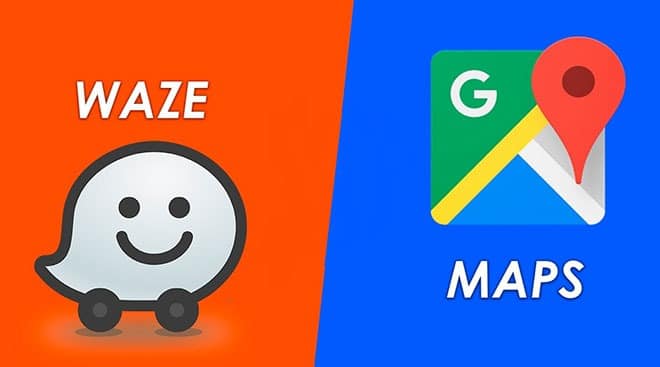Apps have completely revolutionized our lifestyle. To think, until a few years ago, of having a navigator integrated into our mobile phone, was certainly utopian.
Remember the TomTom years? To have a navigator inside your car it was necessary to buy it externally and with high prices for the time.
Fortunately, nowadays it is enough to have a smartphone connected to GPS and the mobile network and that’s it. In the past, we have already dealt with maps and navigators. In particular, we have seen how to use Google Maps without being connected to the internet.
Today, however, we will compare Google Maps with another app that is literally depopulating among driving lovers. We are talking about Waze.
A lightweight app, available for both Android and iOS, easy to use, and 100% free. In this article, we will look at its strengths together and try to understand why it is slowly supplanting Google Maps as the navigation system most used by users.
The merits of Google Maps
First, let’s see together what are the advantages of the Google app.
Anyone who has never used Google Maps raise your hand… well no one could, as all of us at least once used this powerful software from the American giant.
Google Maps is certainly one of Google’s most popular apps. If you have an Android smartphone you will find it already installed on your device and this is definitely an advantage in favor of this app.
Google Maps also allows you to know useful information on the places you have chosen to reach.
If, for example, you want to go to a bar and enter the exact address on the navigator, Google will be able to tell you if the café will still be open or closed when you arrive.
Maps is able to do this, as it is interconnected with all Google systems. In this case, Google Business.
Maps, unlike Waze, can also tell you the routes on foot and by public transport. Waze, on the other hand, only suggests those in cars. Finally, Maps gives you the possibility to take advantage of 3D surveys and satellite view of the roads.
To say, therefore, that Maps is an app to be used only as a navigator is definitely an understatement. Maps is much more than that.
We conclude this overview on Maps by spending a few words on the Street View function which is perhaps the flagship of Google technologies.
Street View allows you to place a real virtual man anywhere (mapped by Google) in the world. The little man will show you real street scenes, in order to provide you with a very useful and totally immersive experience.
It is an extraordinary function, probably unique in the current panorama. Virtually almost the whole world can be visited while comfortably seated on an armchair at home, with the possibility of visiting unknown streets of Tokyo and a second later, perhaps a stop at Central Park in New York.
Waze- the strengths
Now let’s move on to what are the strengths of Waze.
Waze is a navigation app that was developed by an Israeli start-up. The app was then acquired by Google itself in June 2013.
Unlike traditional GPS navigation programs on the market, Waze allows you to get updates on traffic, speed cameras, and accidents in real-time. This happens thanks to the exchange of information between the users who use it.
The app is able to provide an extremely accurate travel time estimate, as it is able to learn from the driving times employed by the users who use it. The app is available for both Android and iOS. It is very light and can be used for free.
Inside there are advertising inserts. The real strength of this app is, in fact, the community. When you travel you collect points that allow you to climb a ranking. You can report accidents, traffic, and other information that you consider useful for other travelers yourself.
The sense of community guarantees its success. Using it is indeed very fun. Furthermore, when you are on the road, you will be able to find “candies” that will make you get more points and thus climb the driver rankings. Definitely, a useful way to make driving more interesting.
Mini-games foster engagement and competition, making road information more up-to-date in areas where details are few or missing.

